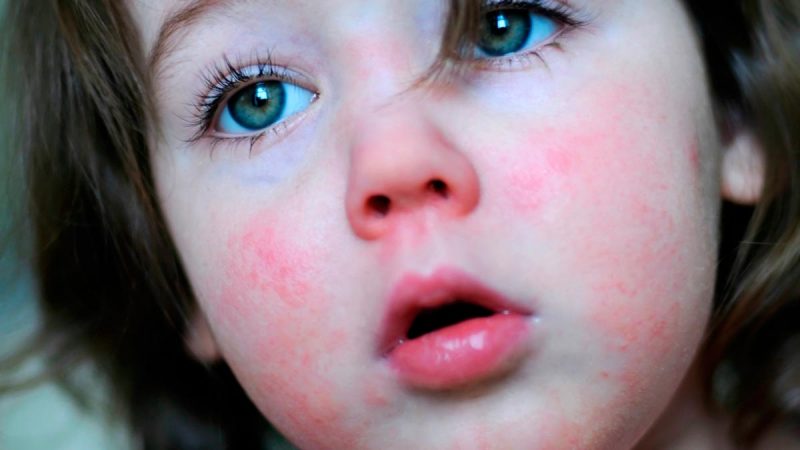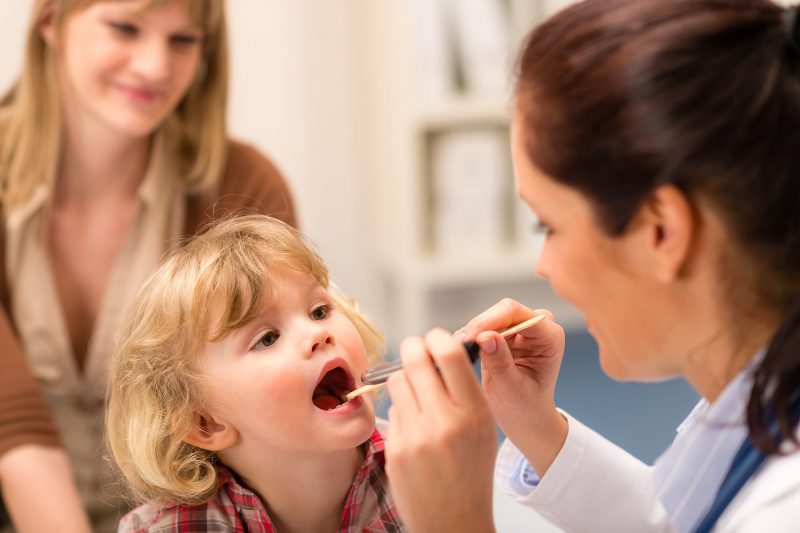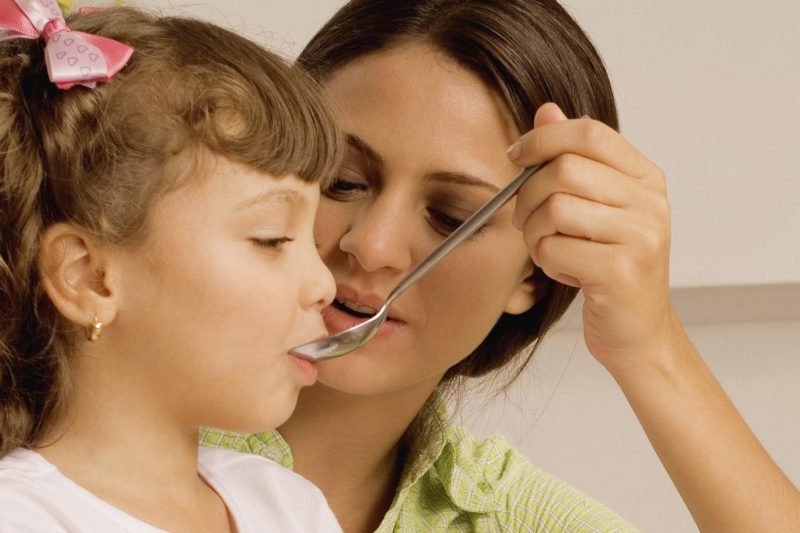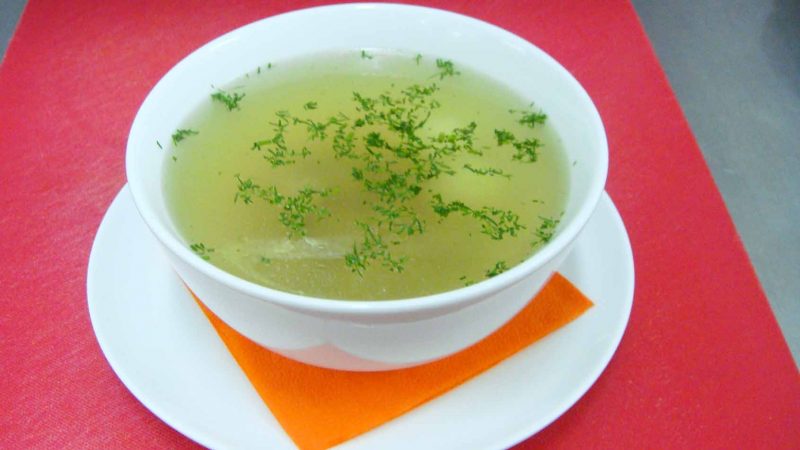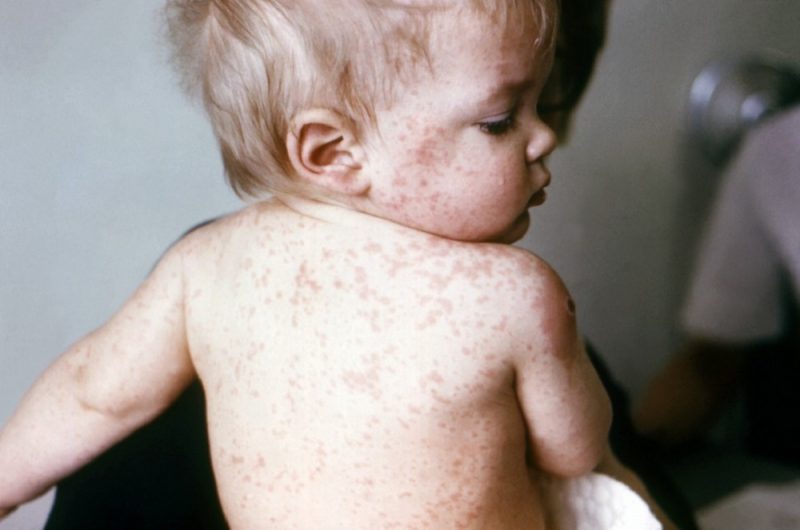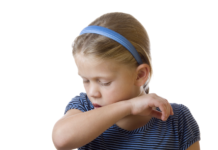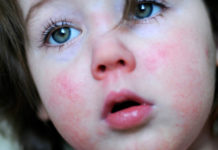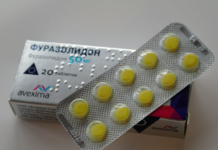Scarlet fever is a very common infectious disease in children aged 2 to 11 years. But an adult can become infected, provided that he has not suffered this disease in childhood. The older the patient, the higher the risk of complications, and he is also very high in cases where the patient does not receive medical care on time. Therefore, it is so important to know how scarlet fever manifests itself in children and adults, and take the necessary measures immediately.
Material Content:
- 1 How is scarlet fever transmitted, its causes
- 2 Incubation period
- 3 The first signs that a child has scarlet fever
- 4 Symptoms and signs of the disease
- 5 Diagnostic measures
- 6 Treatment of scarlet fever in children
- 7 Diet for the disease
- 8 Complications and Predictions
- 9 Prevention of the disease in a child
- 10 What diseases may resemble scarlet fever
How is scarlet fever transmitted, its causes
The causative agents of the disease are streptococci, which belong to the viruses of group A. Most often they pass from one person to another by airborne droplets and parasitize on the mucous membranes of the mouth, nose and very rarely in the genitals.
But there are other ways of infection:
- Domestic. In this case, the infection spreads through household items that are used by both a sick person and healthy family members.
- Food, or alimentary. Often streptococci enter the body with food, most often through milk that has not been boiled.
- Intrauterine. In medicine, cases are described when, in the process of passing through the birth canal, a child becomes infected from a sick scarlet mother.
On a note. It is extremely rare that pathogenic bacteria enter the body through the skin, if they are damaged. However, the disease develops when the lymph nodes are located nearby.
If streptococci got into the blood, the painful process does not always develop, everything depends on the strength of the immune system.
Factors that negatively affect its protective functions, and therefore increase the risk of a disease, include:
- frequent hypothermia;
- hypovitaminosis;
- non-observance of sleep patterns;
- the presence of chronic diseases;
- stress and emotional overload;
- hypodynamic lifestyle;
- in adults - abuse of alcohol, cigarettes and illegal substances.
To prevent infection with scarlet fever and its attendant complications, it is important not only to know how this disease is transmitted and to take the necessary preventive measures, but also to take care of strengthening the immune system.
Incubation period
Depending on the individual characteristics of a person, from the moment the virus enters the body until the first signs of the disease appear, 3 to 7 days pass. It is extremely rare that the incubation period lasts more than 10 days.
In this case, you can become infected from the carrier of the infection even before the appearance of symptoms of scarlet fever. And after recovery and the disappearance of characteristic signs, the patient is dangerous to others for another week.
The first signs that a child has scarlet fever
When pathogenic bacteria enter the body, an active process of their reproduction begins. At this stage, a person still does not feel any changes in his condition, but as a result of the accumulation of waste products of streptococci, which are strong toxins, the first signs of scarlet fever begin to appear.
At first, the disease makes itself felt with a slight reddening of the throat and slight inflammation of the tonsils, while the root of the tongue is covered with a white coating. At this stage, scarlet fever is not difficult to confuse with a beginning sore throat.
The next stage, which is considered the beginning of the disease, proceeds sharply and rapidly:
- sharply increases body temperature;
- a rash appears on the skin;
- headaches occur.
In addition, the initial stage of scarlet fever is characterized by weakness, loss of strength and general malaise.
Symptoms and signs of the disease
Scarlet fever is manifested by the following symptoms of varying severity, depending on the severity of the condition:
- fever;
- headaches;
- nausea, vomiting, and pain in the stomach;
- inflammation of the mucous membrane of the larynx and tonsils;
- gray coating and raspberry stains on the tongue;
- increased heart rate and increased blood pressure;
- swollen lymph nodes, most often on the neck;
- a small rash, after the disappearance of which the skin peels and exfoliates;
- blanching of the nasolabial triangle;
- sleep disturbances and general malaise.
Attention! A rash with scarlet fever does not always occur, atypical cases of the course of this disease are known, in which the skin remains intact.
The severity of the symptoms of the disease depends on its form, which can be mild, moderate and severe. In the first case, relief occurs already on the 4th - 5th day, in the second, the acute process lasts for a week. And if severe scarlet fever is diagnosed, recovery takes more than 10 days, and such patients need hospitalization.
Diagnostic measures
If scarlet fever is suspected, the following measures are taken to confirm the diagnosis:
- general and biochemical blood tests;
- electrocardiography;
- collection of smears from the mucous membranes of the mouth and nose.
These studies are enough to make an accurate diagnosis, after which appropriate therapy is prescribed.
Treatment of scarlet fever in children
Treatment of scarlet fever is carried out using a number of medications, the action of which is aimed at achieving the following results:
- Destruction of pathogenic microflora. To prevent the further development of infection, penicillin and cephalosporin antibiotics are prescribed.
- Detoxification.Since the waste products of pathogenic microbes are strong toxins, drugs that can remove harmful substances from the body are used in the treatment process. And as part of this therapy, heavy drinking, rinsing and irrigation of the throat with antiseptic solutions is indicated.
- Temperature reduction. It is allowed to use antipyretic drugs when the mercury column rises above 38.5 ºС.
- Strengthening the immune system. To increase the body's defenses, immunomodulators and vitamin complexes are prescribed.
- Microflora recovery. For these purposes, probiotics containing strains of beneficial bacteria are indicated.
If the patient has allergic reactions, antihistamines are prescribed, and with severe attacks of nausea, antiemetic drugs are used.
Diet for the disease
With scarlet fever, it is important not to allow additional stress on the body, so a special diet has been developed for such patients.
It is recommended to replenish the diet with such products and dishes:
- broths and soups;
- liquid cereals;
- low-fat varieties of fish;
- lean meat and poultry;
- Fresh vegetables and fruits.
It is worth limiting the use of spicy, oily, canned, fried and smoked foods.
The following products should be excluded from the daily menu:
- sparkling water;
- baking;
- chocolate and other products with cocoa beans;
- coffee and strong tea;
- citruses.
Important! To accelerate the elimination of infection from the body, it is recommended that you drink plenty of water, at least 2 liters per day.
Complications and Predictions
If the treatment is prescribed correctly and on time, the likelihood of any disorders caused by scarlet fever is small, and the prognosis is favorable. As a rule, after a week, the patient's condition is normalized and his health can be considered satisfactory.
In severe forms of the disease or in cases where the patient has not received qualified help on time, complications are possible. They are divided into the earliest, occurring a few days after the onset of the disease, and later, which appear later.
The following categories are included in the first category:
- necrotic tonsillitis with the death of the mucosa in the tonsils;
- suppuration in the nasopharynx;
- the development of lymphadenitis;
- otitis;
- inflammation of the larynx and paranasal sinuses;
- abscesses in the kidneys and liver;
- blood poisoning.
Later complications of scarlet fever are as follows:
- heart dysfunction;
- inflammatory processes in the joint tissues and rheumatism;
- serious kidney disease;
- brain damage of varying severity.
To reduce the risk of these conditions, if you find the first signs of scarlet fever, you need to see a doctor, and during the treatment you must follow all the instructions and adhere to the medication regimen.
Prevention of the disease in a child
There is no vaccine that can protect against scarlet fever. Therefore, such a disease can be prevented only by observing the rules of personal hygiene and strengthening the immune system.
When one of the family members is infected, you can prevent the infection of others by the following measures:
- to give the patient separate dishes, a towel and other personal items;
- regularly carry out wet cleaning with disinfectants;
- ventilate the room where the patient is;
- when communicating with a sick person, use a cotton-gauze bandage;
- for preventive purposes, irrigate the throat and nose with antiseptic solutions, for example, Miramistin.
If the child has had contact with a person infected with scarlet fever, it should be isolated from other children for a week, even if there are no signs of the disease.
What diseases may resemble scarlet fever
At the initial stage, scarlet fever can be confused with angina, because these diseases have many similar symptoms.
And also when making a diagnosis, it is important to differentiate this disease from such conditions:
- rubella
- pseudotuberculosis;
- allergies of various origins.
The treatment methods for these conditions are significantly different from scarlet fever therapy, and it is important to make a correct diagnosis. Therefore, if there are alarming signs, you should immediately contact a medical institution, and not try to help the patient at home. The possibility that they are caused not by scarlet fever, but by another violation cannot be ruled out.


